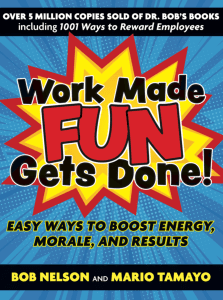The Things Every New Business Needs To Succeed

Every entrepreneur starts off with a dream and a passion for what they want to do. However, a lot of people fail to turn their dreams into a reality. So it really does help to have a bit of an idea of what you need to do in order to get to where you want to be.
What Makes a Successful Business?
The things that make a business a success can vary. For some, it will be their marketing strategy, for others it will be their product idea. But, it’s safe to say that there will be some unity in most cases. And so, if you like the idea of starting out right, it’s a good idea to follow a few set steps.
Getting to Know Your Business Goals
Business goals are essential for any company to succeed in the long run. The goal of a business is not to make a lot of money or be famous – it’s to make a profit and provide its customers with what they need.
It is important for a business owner to know their business goals and how to measure them in order for them to improve their company’s performance. This is an effective way that you can understand your business objectives.
In order for them to understand their business goals, you should identify your organization’s vision, mission, and values. It is also important that you set up clear limits on what you want from your company in order to determine how successful it can be.
Developing Your Company’s Mission Statement & Values
Companies need to have a clear mission and vision to guide them while they’re growing. This can be done by creating a mission statement and values that will foster the company’s culture, ideals, and beliefs.
Essentially, a mission statement defines what you do and why you do it for your customers. It should be concise, but focused on what inspires you to wake up in the morning and work hard.
A company’s values should also guide its decision making process, so knowing what your company stands for will help all of your employees work together towards a common goal. That’s why we recommend having clear intentions with your values so that everyone knows where they stand at any given moment.
Identifying Your Target Audience and Reaching Your Customers
Next, you need to make sure that you know who your audience is. While the target audience is an important step in any marketing strategy, it is not always easy to identify who they are and how best to reach them.
The first step for identifying your target audience is understanding what your business does and who its customers are. If you know this, then it will be easier for you to figure out who your ideal customer is. You can then create profiles on who they are and work out a strategy to target them.
Creating a Successful Marketing Strategy that Gets Results
Now you need to work out how you’re going to target your audience by marketing to them. A successful marketing strategy depends on three things: where you want to go, what you sell and how you sell it.
This starts with your company’s core offer and understanding what makes a product or service stand out from its competitors. This will help you create a marketable message. You then need to choose the platforms you’ll deliver this on too.
In order to make sure that your marketing strategy is successful, you need to make sure that it aligns with your company’s goals. Your business will be able to grow as a result of the strategy as well as the product or service itself.
How to Create an Online Presence with Social Media
Right now, having some kind of presence on social media is always going to be a great idea. But if you want to create your online presence with social media, the first thing you need to do is build up your following.
This means that you need to know how to create content that will engage your target audience on your chosen platform. You need to interact with them and get them to engage with your content or move to your site. You could even look to do paid campaigns or work with influencers to make this happen.
Working With Experts That Can Add Value to Your Business
But then also, it’s important to recognize the value in working with experts and professionals in your business. It’s important to get the right expertise for your business and the best way to do that is by finding people who can add value to your business.
To do this, you need to identify who and what you need. Do you need an accountant or financial specialist? Or maybe you need complete on-site & in house welding services for your product? It might even be a great idea to hire a business expert or consult to help you grow and reach your goals too.
Having Determination To Succeed and A Vision of What Success Looks Like
It is easy to be determined when your vision is clear and you have the drive to achieve success. You will know that you are on the right path when things get tough and you don’t stop.
It’s not always easy to see success because we can’t predict how different things will turn out in the future. But we do know what it takes to succeed. It’s taking action and working hard every day, no matter how much it seems like nobody wants or likes what we do.

 The businesses that fail to manage cash flow effectively are often doomed to failure. Put simply, you need to have more cash coming in from sales than you have going out for expenses. Being able to pay your debts on time and ensuring you have enough reserves to cover all expenses is key to success. Read on to find out why cash flow is so important and how you can manage it effectively.
The businesses that fail to manage cash flow effectively are often doomed to failure. Put simply, you need to have more cash coming in from sales than you have going out for expenses. Being able to pay your debts on time and ensuring you have enough reserves to cover all expenses is key to success. Read on to find out why cash flow is so important and how you can manage it effectively.



